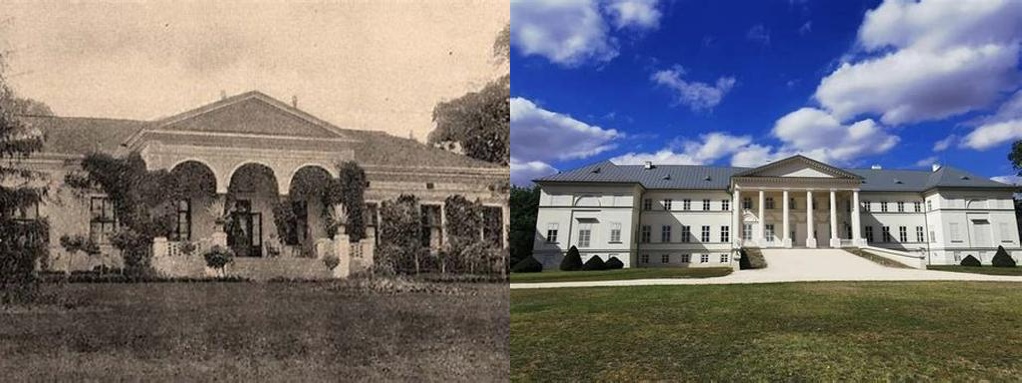
Wodianer-kastély is one of those places that doesn’t shout for attention, and yet, when you step into its grounds in the peaceful town of Maglód, you sense layers of stories beneath the tranquil surface. The castle isn’t perched atop a dramatic hillside nor is it encircled by moats shimmering under floodlights. Instead, it gazes out quietly from the center of Maglód, a place where time sometimes seems to pool rather than flow. What makes a visit here remarkable isn’t grand fireworks but the feeling of walking into a whispering archive of local lives, ambitions, and the gentle collision of Hungarian history and private memory.
Take a stroll toward the castle, and you find yourself retracing the footsteps of Fülöp Wodianer, the castle’s original owner. It was in the latter half of the 19th century—specifically, the castle is widely believed to have been erected between 1867 and 1873—that Wodianer, a successful Jewish grain merchant and landowner, decided to build his residence here. Why Maglód? The answer is part family, part business—a nod to the fertile Pest plain and to the ties that bound families like the Wodianers to this region. The castle that arose here wasn’t a marbled palace or a fortress designed for show; it was built to be lived in, to shelter dreams, and to host regular life amid its dignified symmetry and cool plastered walls. As you approach, you’ll notice the castle’s simplicity: a single floor, elongated shape, and broad windows lined up beneath a hipped roof. No architectural acrobatics—just a sensible, handsome structure planned for family comfort, yet robust enough to last a century and a half.
The tale of Wodianer-kastély is not simply a relic of personal aspiration; it gently mirrors the ebbs and flows of Hungarian regional life. With the tides of the 20th century—two world wars and a constantly rearranging Europe—the castle, like many estates, underwent its share of turbulence. Its walls have seen prosperity, uncertainty, and the everyday changes of dozens of caretakers and tenants. After the Wodianer family’s time, the castle became home to a range of different uses, serving at various points as accommodation, a school, and even as a cultural center. Each reinvention left its mark, and as you wander the spacious rooms, you may spot subtle alterations—a newer wall here, a patched floor there. These details are like reading a diary, with faint entries layered over each other, reminding visitors that architecture, too, is a living witness.
One of the most striking features of the castle is its park—now somewhat tamed, but still lush in spring and summer with old trees breathing life into the grounds. There’s a magic to these small, private parks, especially when the late afternoon sun filters through the leaves and throws patterns onto the faded gravel paths. If you pause, you might find it easy to imagine what life looked like for the Wodianer family or one of the many children who attended school here post-war, peering through those same leaves in the hope of a hidden adventure. The landscape hugs the castle in a gentle embrace, unlike the more regimented parks of larger manors. Here, nature weaves in and out; the garden, like the castle, feels open and quietly accommodating.
Visiting Wodianer-kastély today isn’t about ticking a box on your grand tour of Hungary’s castles. In fact, if you are inclined toward grand halls stuffed with baroque gilding and echoing with silent chandelier-lit dances, this may not be your place. The castle’s unique charm is its humanness. There’s a certain satisfying ordinariness: faded stucco, worn wooden doors you can’t help but touch, tall windows dangling open to let in the breeze, and the honest silence of rooms that once heard arguments over bread prices or maybe a piano struggling through a winter night. It is a place rooted locally, and yet the stories it holds are quietly universal—of family striving, adaptation in difficult times, and the simple, poignant persistence of homes that outlast their makers.
When you leave Maglód, and the last glimpse of Wodianer-kastély slips behind the trees or rooftops, the memory doesn’t fade quickly. If anything, it lingers, as if you’ve glimpsed the pages of an open letter; one not only about a family or a town, but about a way of slow living, of place, and the imperfect but beautiful endurance of history written in cracks, echoes, and ever-open doors. Why visit? Maybe it’s because, every so often, we need places that ask us to listen rather than simply look. And in the unassuming quiet of Wodianer-kastély, you may just find something rare: a quiet invitation into the ever-tangled, endlessly intriguing web of Hungarian memory.





